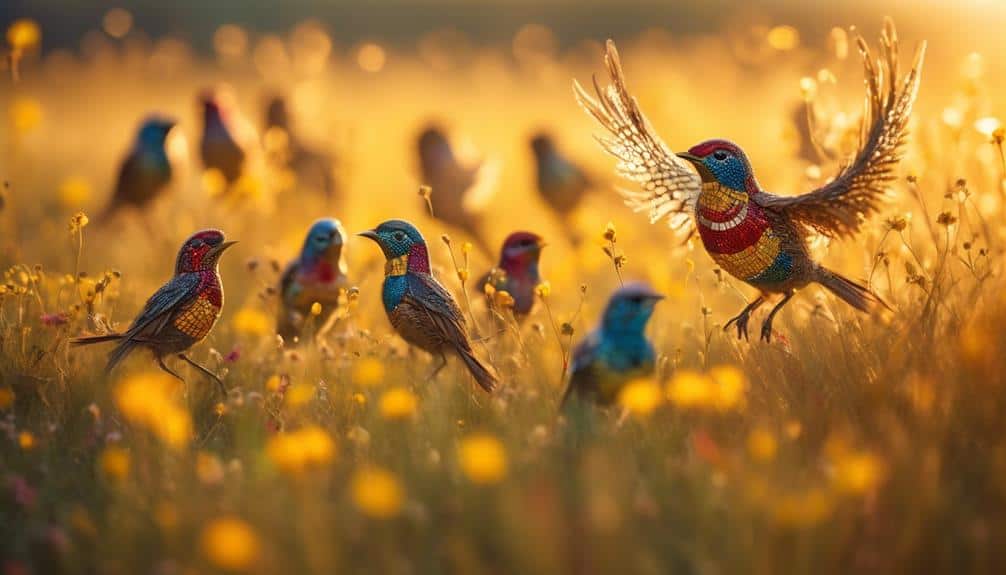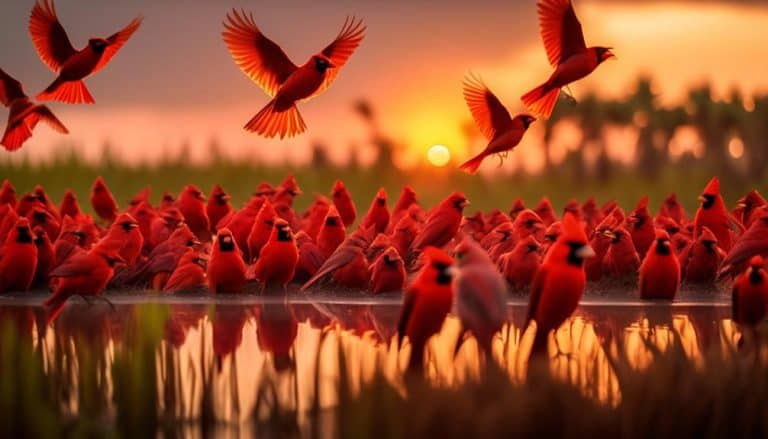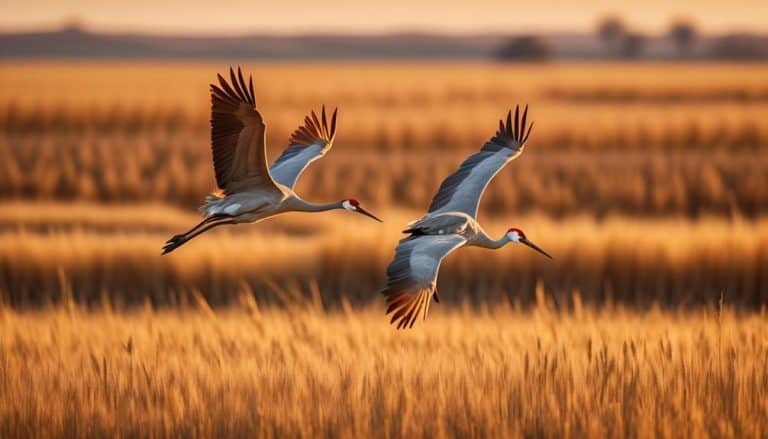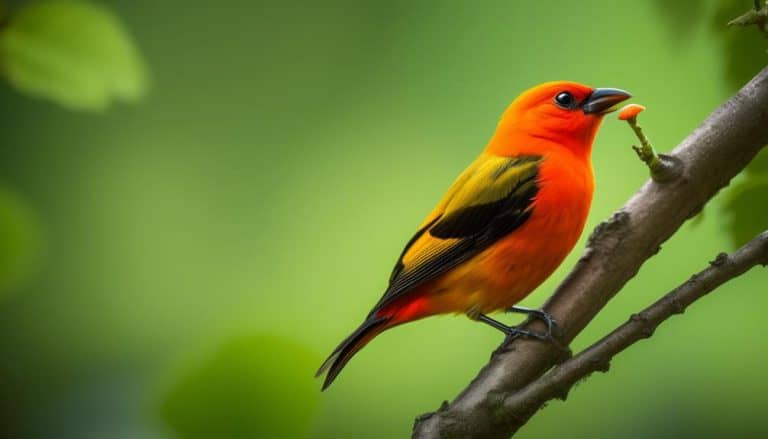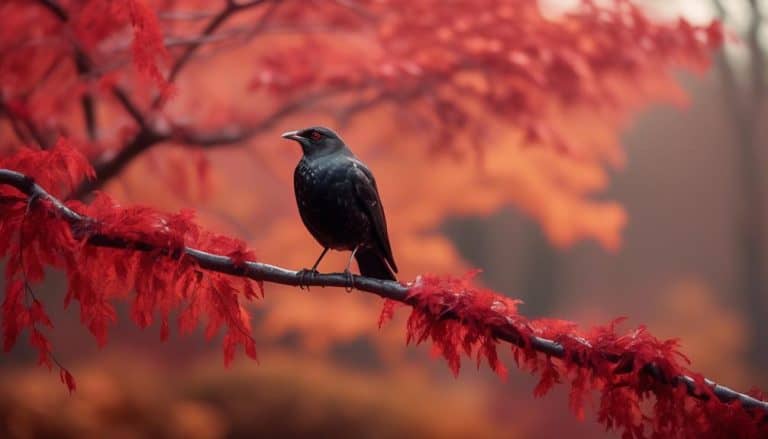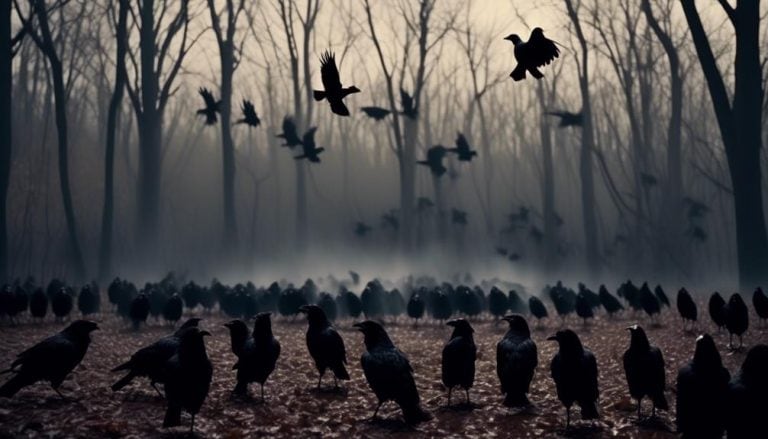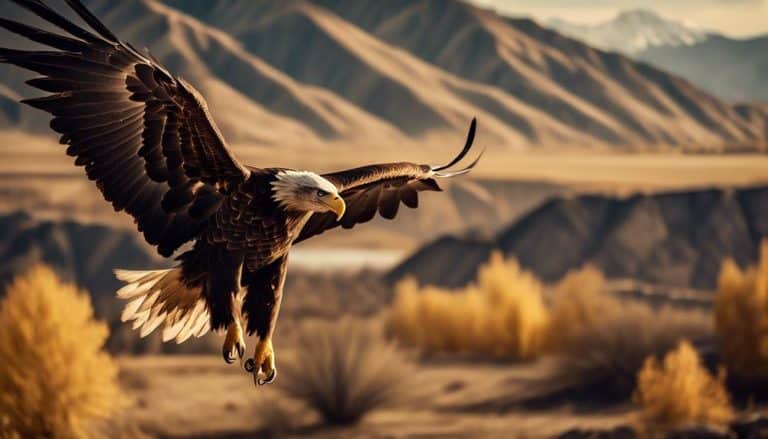As I stood beneath the towering cottonwood trees, their branches swaying gently in the breeze, I couldn't help but be reminded of the fragility of small birds in Kansas. Just like these delicate branches, these birds are often overlooked and underestimated in their significance to the natural world around us.
From the vibrant blue of the Indigo Bunting to the cheerful melody of the American Goldfinch, small birds bring color and life to our landscapes. But their presence extends far beyond aesthetics. In fact, their migration patterns, nesting habits, and role in the Kansas ecosystem are a testament to their resilience and importance.
So, let's take a closer look at these captivating creatures and discover the secrets they hold.
Overview of Small Birds in Kansas
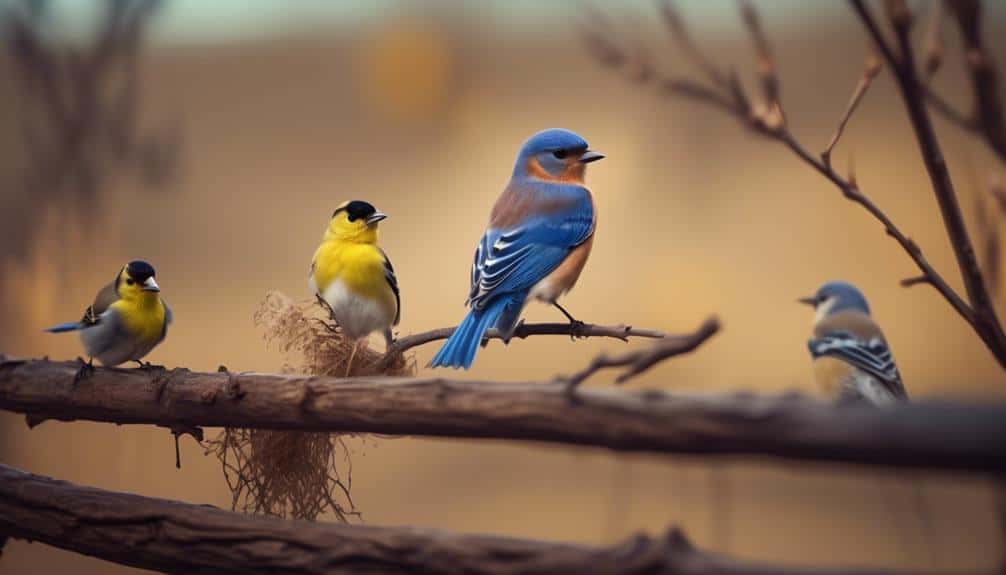
I will provide a detailed overview of the small bird species found in Kansas. Kansas is home to a diverse range of small bird species, each with its unique characteristics and habitats. These small bird species play a vital role in the ecosystem and are the focus of important conservation efforts.
One of the small bird species found in Kansas is the Eastern Bluebird (Sialia sialis). These stunning birds are known for their vibrant blue plumage and cheerful songs. They primarily inhabit open woodlands and grassy areas, building their nests in tree cavities or man-made nest boxes. Conservation efforts for the Eastern Bluebird include providing and maintaining nest boxes to increase their breeding success.
Another small bird species found in Kansas is the American Goldfinch (Spinus tristis). These bright yellow birds are a delight to observe with their graceful flight and melodious songs. They're commonly found in open fields, meadows, and gardens, feeding on seeds and insects. Conservation efforts for the American Goldfinch include protecting their habitats by preserving open spaces and planting native vegetation to provide food and nesting sites.
Common Small Birds in Kansas
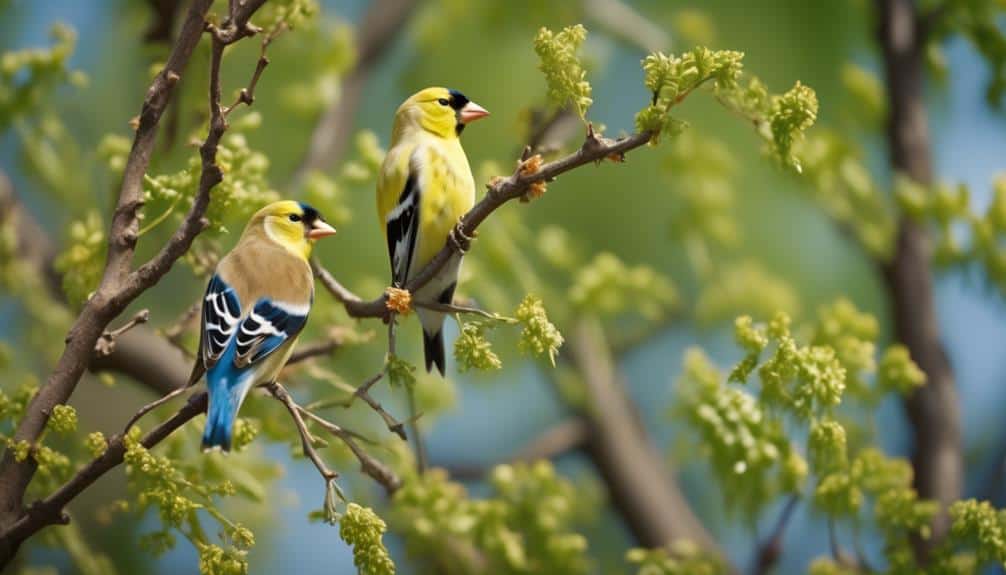
Common small birds in Kansas include a variety of species that play important roles in the ecosystem through their diverse habitats and distinctive characteristics. These bird species can be found in various habitats such as woodlands, grasslands, and wetlands, each displaying unique behaviors and adaptations.
Some common small bird species in Kansas are:
- American Goldfinch (Spinus tristis)
- Males sport vibrant yellow plumage during breeding season.
- They're seed-eaters and are often seen feeding on thistle seeds.
- Eastern Bluebird (Sialia sialis)
- Known for their striking blue feathers and rusty-red breast.
- These birds are cavity nesters and often use artificial nest boxes.
- Northern Cardinal (Cardinalis cardinalis)
- Easily recognizable by their bright red plumage and distinctive crest.
- Male cardinals are known for their melodious songs.
- House Wren (Troglodytes aedon)
- Small and compact with a short tail and brown plumage.
- They're known for their bubbly and cheerful songs.
These small birds exhibit a range of behaviors, including foraging for food, building nests, and defending territories. Understanding their behavior helps us appreciate their role in maintaining the balance of the Kansas ecosystem.
Migration Patterns of Small Birds in Kansas
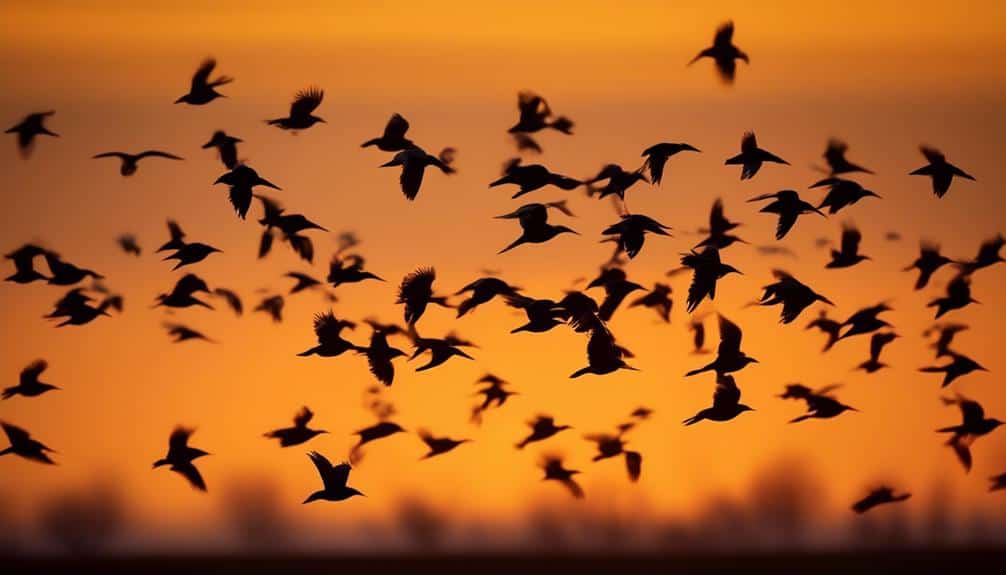
Small bird migration patterns in Kansas are a fascinating phenomenon that showcases the remarkable navigational abilities and adaptive strategies of these avian species. Migration is a vital aspect of the life cycle of small birds, as it allows them to exploit different habitats and resources throughout the year. In Kansas, various small bird species undertake impressive migratory journeys, traveling thousands of miles to reach their breeding, wintering, and stopover areas. Bird banding has played a crucial role in understanding these migration patterns. By placing uniquely numbered bands on birds' legs, scientists can track their movements and gather valuable data on migration routes, timing, and stopover locations.
To illustrate the diversity of small bird migration patterns in Kansas, consider the following table:
| Species | Migration Route | Timing |
|---|---|---|
| Ruby-throated Hummingbird | Central America to Eastern U.S. | Spring and Fall |
| Swainson's Thrush | South America to Northern U.S. and Canada | Spring and Fall |
| Yellow Warbler | South America to Northern U.S. and Canada | Spring and Fall |
These examples highlight the vast distances small birds cover during migration. It also emphasizes the importance of preserving their habitats along their migratory routes. Bird conservation efforts, such as creating protected areas and promoting habitat restoration, are crucial for ensuring the survival of these remarkable migratory species. By understanding their migration patterns and implementing effective conservation measures, we can contribute to the long-term viability of small bird populations in Kansas and beyond.
Habitats and Nesting Habits of Small Birds in Kansas
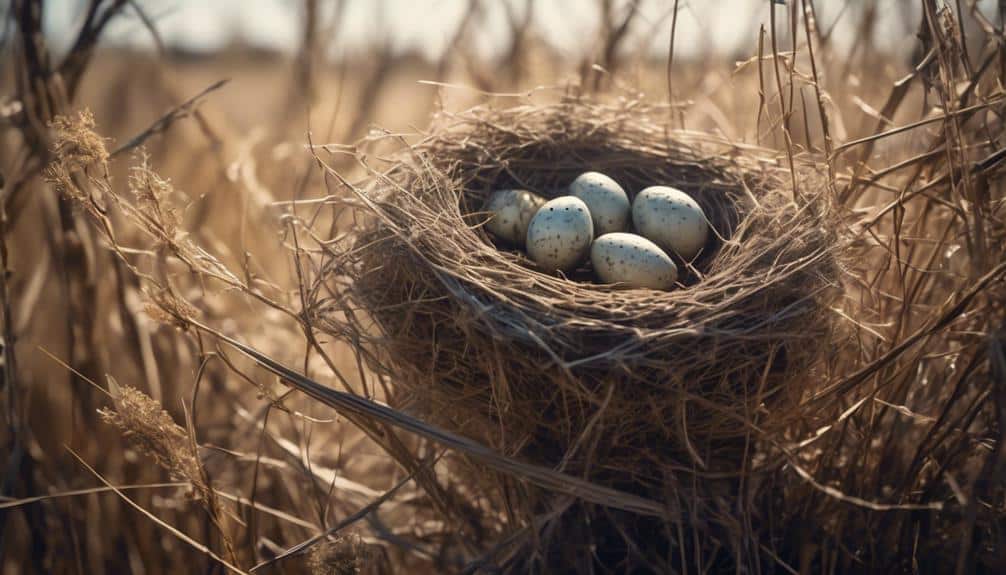
As we explore the fascinating world of small bird migration patterns in Kansas, it's essential to shift our focus to the habitats and nesting habits of these remarkable avian species. Understanding their habitats and nesting habits plays a crucial role in their conservation and overall survival.
Here are some key points to consider:
- Habitat diversity:
- Small birds in Kansas inhabit a wide range of habitats, including grasslands, woodlands, wetlands, and urban areas.
- These diverse habitats provide the necessary resources for small birds, such as food, shelter, and nesting sites.
- Conservation efforts:
- Protecting and preserving the various habitats in Kansas is vital for the survival of small bird populations.
- Conservation organizations and government agencies work together to implement habitat restoration and enhancement projects, creating suitable nesting sites for small birds.
Importance of Small Birds in the Kansas Ecosystem
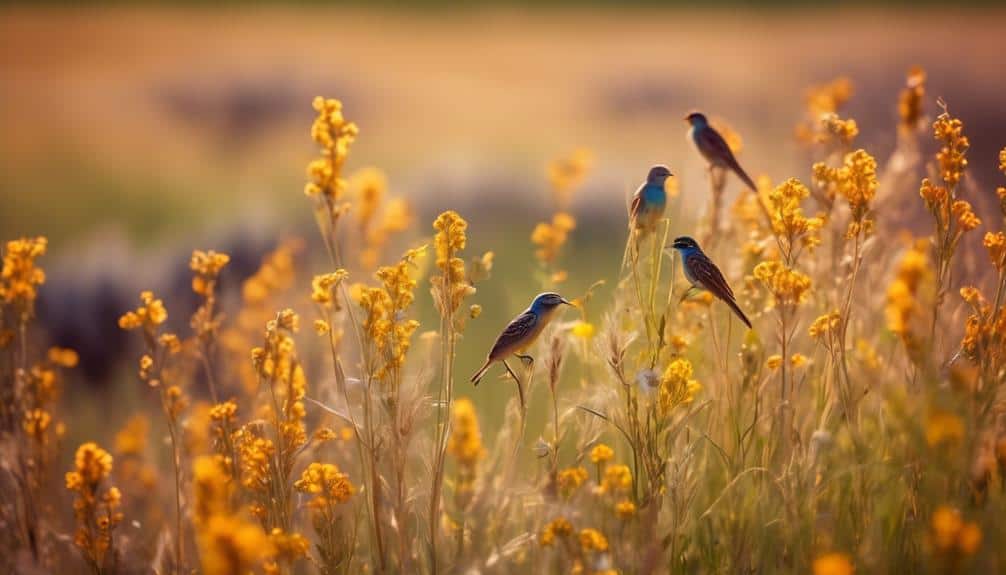
Nestled within the intricate web of the Kansas ecosystem, small birds play a pivotal role in maintaining the delicate balance and functioning of this diverse and dynamic environment. One crucial role of small birds in Kansas is their contribution to pollination. As they move from flower to flower in search of nectar and insects, small birds inadvertently transfer pollen from one plant to another, facilitating fertilization and ensuring the reproduction of various plant species. This process is vital for the production of fruits, seeds, and new plant growth, which sustains the overall biodiversity and stability of the ecosystem.
However, the impact of climate change on small birds in Kansas can't be overlooked. Rising temperatures, altered precipitation patterns, and extreme weather events pose significant challenges to these delicate creatures. Changes in the timing of flowering and migration disrupt the synchronized relationship between small birds and their food sources, leading to potential declines in pollination services. Additionally, the loss and fragmentation of habitats due to human activities and climate change further threaten the survival of small bird populations.
Understanding and mitigating the effects of climate change on small birds is crucial for the long-term health and resilience of the Kansas ecosystem. Conservation efforts such as protecting and restoring habitats, implementing sustainable land management practices, and reducing greenhouse gas emissions can help mitigate the negative impacts and ensure the continued importance of small birds in maintaining the delicate balance of the Kansas ecosystem.
Tips for Birdwatching Small Birds in Kansas

What are some effective strategies for observing and studying the small bird species that inhabit the diverse ecosystem of Kansas? Birdwatching is a popular hobby that allows enthusiasts to observe and learn about the fascinating world of birds. When it comes to birdwatching small birds in Kansas, there are a few techniques and best locations that can greatly enhance your experience.
Here are some birdwatching techniques you can employ:
- Be patient and observant: Small birds are often quick and elusive, so it's important to stay still and keep a keen eye on their movements.
- Use binoculars: Investing in a good pair of binoculars can greatly enhance your ability to spot and identify small birds from a distance.
When it comes to the best locations for birdwatching small birds in Kansas, consider the following:
- Wetlands and marshes: These habitats attract a wide variety of small birds, such as warblers, sparrows, and finches.
- Wooded areas: Forests and woodlands provide shelter and food sources for many small bird species, including the colorful and elusive woodpeckers.
Frequently Asked Questions
What Is the Average Lifespan of Small Birds in Kansas?
The average lifespan of small birds in Kansas is influenced by various factors, including protection from predators. Understanding how these factors interact can provide insight into the longevity of these birds in their specific environment.
How Do Small Birds in Kansas Protect Themselves From Predators?
To protect themselves from predators, small birds in Kansas employ various strategies. These include building intricate nests, camouflaging their eggs, and utilizing alarm calls to alert others. They also have specific feeding habits and diet preferences that aid in their survival.
Are There Any Endangered Species of Small Birds in Kansas?
Yes, there are endangered species of small birds in Kansas. Endangered species conservation plays a crucial role in protecting these birds. Habitat preservation is necessary to ensure their survival and prevent further decline in their populations.
What Is the Role of Small Birds in Pollination and Seed Dispersal in Kansas?
The role of small birds in pollination and seed dispersal in Kansas is crucial. They play a vital role in agriculture by facilitating the transfer of pollen and spreading seeds, which has a significant impact on ecosystem services.
How Do Small Birds in Kansas Communicate With Each Other and What Sounds Do They Make?
Small birds in Kansas communicate through a variety of vocalizations, including chirping, trilling, and singing. They use these sounds to communicate with each other, attract mates, defend territories, and warn of danger. However, habitat loss has greatly impacted their populations.
Conclusion
As I stood silently in the Kansas wilderness, my heart raced with anticipation.
The small birds of this vast land had captivated my senses, revealing their intricate migration patterns and nesting habits.
These tiny creatures, often overlooked, play a crucial role in the delicate balance of the Kansas ecosystem.
Their presence is a reminder of the interconnectedness of all living beings.
With each glimpse, I was reminded of the immense beauty and significance of these small birds, forever etched in my memory.

